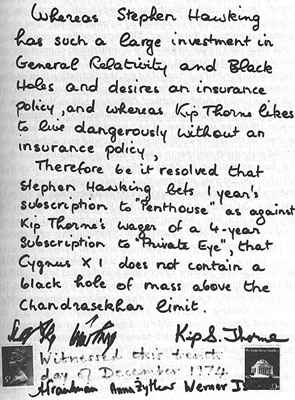The enigmatic X-ray binaries
X-rays from outside the solar system were first detected in 1962. A few years
later one of the strongest sources, Cygnus X1, was found to be varying on very
short timescales. These were interesting observations, but by the end of the
1960s one had only identified twenty or so X-ray sources. Most of these were
located in the galactic plane. It was very difficult to conduct a search for
X-ray sources from the ground, since the bulk of the incoming X-rays was absorbed
by the Earth's atmosphere. The era of X-ray astronomy truly began with the launch
of the Uhuru (which means ``Freedom'' in Swahili) satellite off of Kenya's coast
on December 12 1970. The satellite was devoted to X-ray observations in the
2-20 keV band. By the time of its demise in March 1973, Uhuru had discovered
more than 300 discrete sources. This data enabled scientists to make positive
identification of X-rays from binary systems. From the Uhuru observations it
was inferred that most of the galactic X-ray sources ought to be compact objects
either neutron stars or black holes) accreting matter from a binary companion.
These conclusions followed from i) the fact that the sources varied on short
time scales, which indicates a small emitting region, ii) the confirmation that
some sources were in binary systems, i.e. there were cases when optical companion
could be observed, and iii) the efficiency with which accretion onto a compact
object can convert energy into X-rays.
 |
|
X-rays are emitted as material from the binary companion falls onto the
compact object in an X-ray binary. The individual masses can be inferred
from detailed observation of the orbital velocities. If the deduced mass
is above (roughly) three solar-masses the compact object is likely a black
hole. Otherwise it is may be a neutron star.
|
Since the early 1970s, many other satellites have confirmed the Uhuru data
and provided us with further details. With the continued observations the evidence
for the existence of solar mass black holes is mounting. Nevertheless the oldest
candidate, Cygnus X1, still presents one of the strongest cases. The case that
Cygnus X1 contains a black hole of perhaps more than ten solar masses has been
argued since the first observations of this peculiar source.
 |
In December 1974 Stephen Hawking and Kip Thorne made their
famous bet on whether or not Cygnus X1 is a black hole. |
The method for infering the presence of a black hole in an X-ray binary is
based on original idea of Reverend John Michell - one can `weigh' the dark object
in a binary system by observing the orbit of the visible companion. If the mass
deduced in this way is significantly above the theoretically suggested upper
mass limit of neutron stars (roughly three solar masses) one has evidence for
the presence of a black hole. Of course, this method is quite uncertain and
it is only in cases when one deduces a mass of (say) ten solar masses for the
unseen companion that the evidence can be considered strong. Current data indicate
the existence of a handful of black holes in X-ray binaries. Most systems seem
to contain neutron stars.
It is, in fact, much easier to infer the presence of a neutron star than a
black hole. Particularly clear evidence comes from systems that show occasional
X-ray bursts. The natural explanation for such bursts is that they indicate
matter hitting the surface of a neutron star and triggering local explosions.
Recent observations (mainly with the Rossi X-ray Timing Explorer) have provided
clear indications that the neutron stars in Low-Mass X-ray binaries (where the
companion is typically a white dwarf) spin very fast (with a rotation period
in the range 2-5 ms). This provides strong support for the long held belief
that these systems are the progenitors of the so-called millisecond pulsars
(the fastest rotating neutron stars known). For tens of millions of years the
neutron star accretes matter from its companion. As this material falls onto
the star it transfers angular momentum to the neutron star which spins up as
a result.

